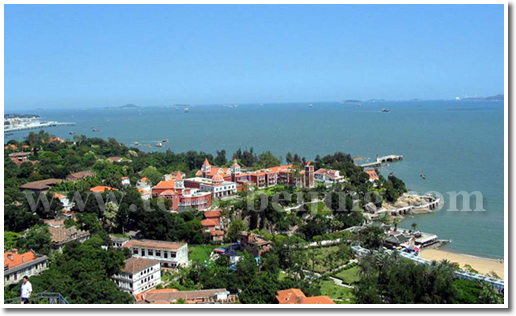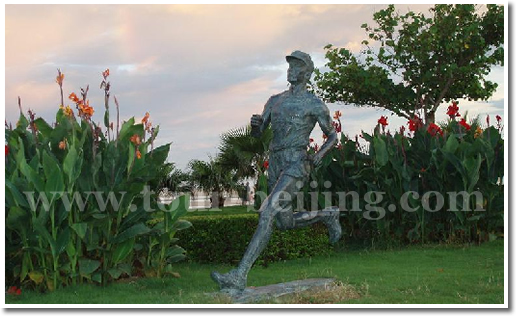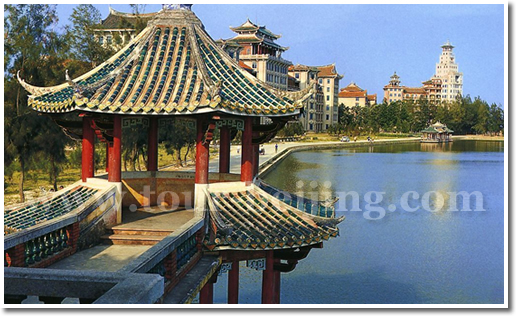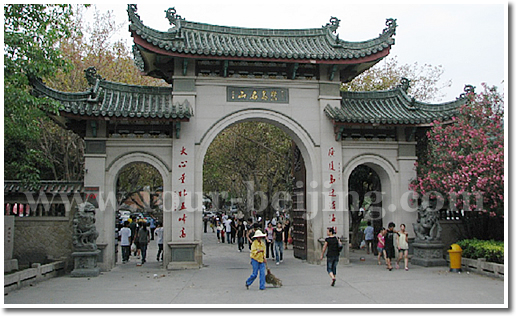Xiamen Travel Guide
Location: Xiamen is in the southeast of Xiamen province. It looks out the Taiwan Strait and borders Quanzhou to the north and Zhangzhou to the south. Population: 2,500,000
Area: 1,569 square kilometers
History: It is said that in the ancient time, flocks of egrets (Bailu in Chinese) migrated to dwell on Xiamen Island from time to time and that is why people call Xiamen "Ludao" (Island of Egrets) and Xiagu Strait "Lujiang" (River of Egrets). The first settlement of people on Xiamen Island dates back to the latter part of the New Stone Age. That was three to four thousand years ago. And the recorded history dates back to the middle period of the Tang Dynasty, which was more than 1140 years ago. During the Tianbao Period of the Tang Dynasty, the ethnic Chinese surnamed Xue and Chen migrated to Xiamen Island from Fu'an in the east of Xiamen Province and Zhangzhou in the south of Xiamen Province and settled at the southern and northern foot of the Hongjishan Mountain respectively.
The administrative organization of Xiamen City was first set up in the Song Dynasty. It was then affiliated to Tongan County, Quanzhou Prefecture. In the twentieth year during the Hongwu Period in early Ming Dynasty (1387), the imperial government started to build stockade villages and forward posts on the island and named the island "Xiamen", meaning the "Gate of the Motherland". And the geographical name of "Xiamen" became the official name of the island despite that Xiamen was once renamed "Siming Prefecture" and "Siming County" during the several hundred years from then on. In 1933, Xiamen was officially established as a city. That made it the first city set up in Xiamen Province.
Climate: Xiamen belongs to a subtropical marine monsoon climate with mild and rainy weather, with an annual average temperature of around 21 ℃. There is no severe cold in winter and no scorching heat in summer. The average annual rainfall is around 1200 millimeters, with the highest rainfall from May to August each year. The wind force is generally level 3-4, and the dominant wind direction is the northeast wind. Due to the temperature difference airflow in the Pacific, it is affected by an average of 4-5 typhoons annually, mostly concentrated in July to September.
Transportation: By Air, By Train and Bus, City Transportation
By Air: Xiamen has an international airport, conveniently close to downtown, 20 minutes by taxi. Having airplane routes to most domestic destinations and destinations outside of China.
By Train and Bus:
There are also expected train and bus services of any major city. The train however, is not a good option for trips along the coast — for example to Fuzhou, Shantou or Hong Kong — because it takes a circuitous route through the mountains. This is changing; a new high speed rail line along the coast is under construction, but as of mid-2007 it is not near completion.
For now, use the bus for those destinations.
Some bus times and costs:
Quanzhou: 35 RMB, 1.5 hours
Fuzhou: 70-90 RMB, 4 hours
Hong Kong, Guangzhou, Shenzhen or Zhuhai: around 300, overnight.
There is a bus direct to Xiamen from Hong Kong airport.
City Transportation:
Taxis are cheap and start at 8 yuan for the first 3 kilometers. The local bus system is very good, but the bus routes are listed in Mandarin and do not have English on them. It is convenient to take the ferry to Gulangyu Island.
Local Food: Seafood, Herbal Meal, Vegetable Dishes, Tu Sun Dong, Peanut Soup, Spring Roll
Attractions: Gulangyu Island, Hulishan Battery, Jimei, Nanputuo Temple
Gulangyu Island- Gulangyu, separated from the main island by the 500-metre-wide Egret River, with an area of 177 square kilometres, enjoys a lauditory title "Garden on the Sea." The original name of the islet was Yuan Zhou Zi. In the Ming Dynasty it was renamed Gulang, meaning ''drum waves", because the holes in the southwestern reefs hit by the waves will make sounds like the drum.

Hulishan Battery- Hulishan Battery Scenic Spot is one of the most famous attractions of Xiamen. In the scenic spot, the Hulishan Battery and the Rongguang Museum are the main buildings.Hulishan Battery lies to the south of the Xiamen. It was built from 1894 to 1986 in the Qing Dynasty (1644 - 1911). Hulishan Battery was an important defensive place during the war against Japan’s aggression between 1900 and 1937, and it had the best equipment in the world at that time.

Jimei-As one of the four major scenic spots in Xiamen, Jimei enjoys a long-term fame for its tourists attractions like Turtle Garden ,Returnees Garden and the former residence of Mr. Tan Kah-Kee. Jimei is a small town on the other side of the bank facing notth Xiamen Island.With Gaoji Causeway and Xingji Causeway meeting there ,Jimei becomes the sole gateway into Xiamen.

Nanputuo Temple- Nanputuo Temple (南普陀寺) is a very famous Buddhist temple founded in the Tang era in the Chinese city of Xiamen. Nanputuo literally means South Putuo. Putuo referring to the mountain in Zhejiang province. After renovation and reconstruction in 1980s, the temple has changed beyond recognition. It has become a perfect example that embodies natural scenic and cultural heritage, boasting many beautiful rock formations, old pine trees, pavilions, lotus ponds, pagodas and halls. As a result, the Nanputuo Temple has attracted many tourist locally and abroad with its splendid architecture and practicing Buddhists for pilgrimage.

Questions & Answers:




